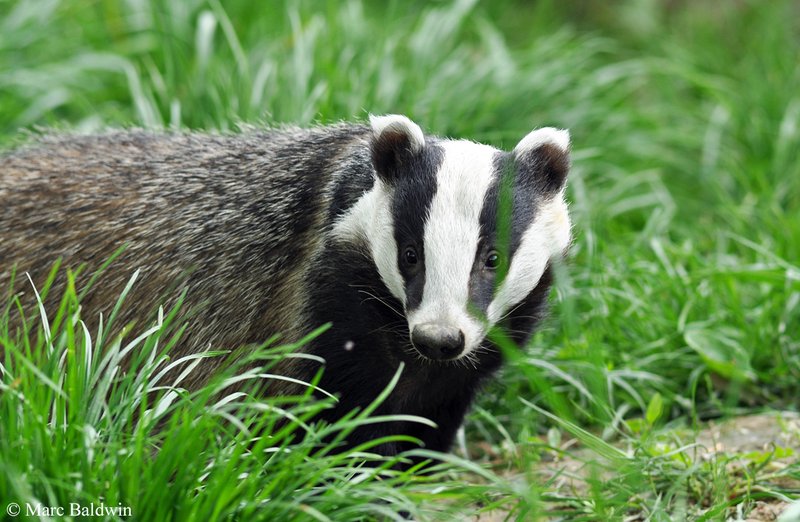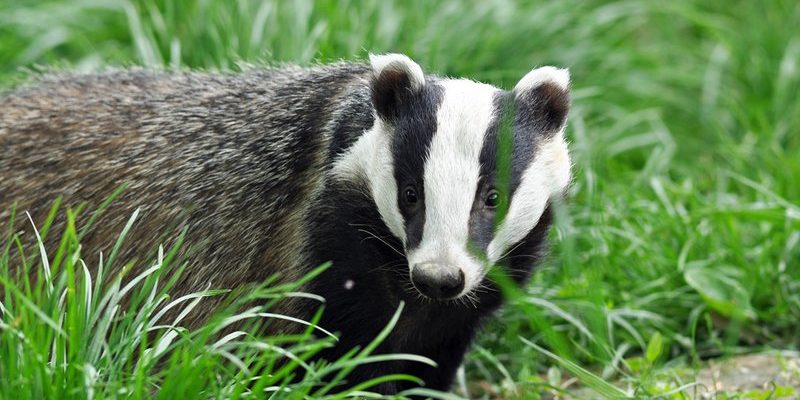
Have you ever thought about how different animals can be, even in your own backyard? One of the most intriguing creatures roaming the forests and fields of Europe is the European Badger. These nocturnal mammals have a personality that matches their cute, burrowing appearance. With their stocky bodies, distinctive black and white faces, and a habit of digging elaborate underground homes, there’s so much to learn about these fascinating animals. Let’s dive into the world of European Badgers together!
The European Badger (Meles meles) is a member of the mustelid family, which includes otters, ferrets, and wolverines. Though they are often associated with folklore and mythology, they are very much real and play a crucial role in their ecosystems. From their social behavior to their unique diets, understanding the European Badger offers a glimpse into how wildlife interacts with its environment.
Physical Characteristics
When you first spot a European Badger, it’s hard not to be taken in by their chunky build and distinctive markings. Adult badgers typically weigh between 6 to 12 kilograms (13 to 26 pounds) and grow to about 90 cm (35 inches) in length. Their most striking feature is the bold black stripes running from their nose to their ears, contrasting beautifully with their grayish fur. These markings aren’t just for show; they help badgers communicate and recognize each other in their social groups.
Another interesting aspect of their physical characteristics is their digging abilities. European Badgers have thick, strong claws that help them burrow into the earth with ease. They are known for creating extensive tunnel systems called setts, which can be quite complex, sometimes comprising dozens of entrance holes. This not only provides them shelter but also safeguards them from predators. Imagine living underground in your own little city—it’s quite the lifestyle!
Habitat and Distribution
The European Badger is primarily found across much of Europe, with their habitat preferences ranging from woodlands and grasslands to farmland. They thrive in regions where there is both cover and food, typically preferring areas with rich vegetation that provides ample foraging opportunities. They are especially fond of hedgerows and areas near human habitation where they can scavenge for food scraps.
Interestingly, badgers are adaptable creatures. If their environment changes, they can adjust their habits accordingly. This adaptability allows them to survive in various landscapes, including urban areas. However, they face challenges due to habitat loss and fragmentation, often caused by agricultural expansion and urban development. This is a reminder of how important it is to protect their natural habitats.
Diet and Feeding Habits
Now, let’s talk about what fuels these fascinating animals. European Badgers are omnivorous, which means they have a diverse diet that includes both plants and animals. They enjoy a wide variety of foods, from earthworms and insects to fruits, nuts, and tubers. Interestingly, they are particularly fond of earthworms, which make up a significant portion of their diet—imagine digging through the ground to find a tasty snack!
Being nocturnal, they forage primarily at night. This behavior helps them evade predators and find food more easily. You might sometimes find them rummaging through gardens or farms, searching for anything edible. This scavenging behavior also makes them beneficial for gardens, as they help control insect populations. So, if you see a badger in your neighborhood, think of it as nature’s little helper!
Behavior and Social Structure
European Badgers are known to be social animals, often living in groups called clans. A typical clan can consist of several related individuals, usually a dominant male and female, along with their offspring. They are quite affectionate with one another, spending time grooming and playing together. This strong social bond is essential for their survival, as it helps them defend their territory and raise their young.
Chances are, if you’re out and about at night, you might hear their vocalizations. Badgers communicate using a variety of sounds, including growls, grunts, and even high-pitched squeals. These sounds play a crucial role in signaling their presence to clan members or warding off intruders. Imagine a little family meeting at night, filled with chatter and playfulness—what a delightful scene!
Reproduction and Lifespan
As spring approaches, European Badgers prepare for the breeding season, which typically occurs from late winter to early spring. After a gestation period of about seven weeks, female badgers give birth to a litter of about two to five cubs. These cubs are born blind and helpless, remaining in the sett for several months until they are ready to venture outside. It’s a fascinating journey from tiny, helpless creatures to independent badgers!
In the wild, European Badgers can live up to 14 years, but many don’t make it that long due to various threats, including predators and traffic. Their lifespan can be significantly shorter in urban settings where dangers abound. This makes every moment precious for these remarkable creatures as they navigate their world.
Conservation Status
While the European Badger is not currently endangered, they face numerous threats that could impact their populations. Habitat destruction, hunting, and road traffic are among the leading factors affecting their numbers. Conservation efforts are crucial to ensure that future generations can continue to enjoy these charming animals. Many organizations advocate for habitat preservation and road safety measures to help reduce the risks they face.
It’s essential for us to raise awareness about their plight and contribute wherever we can. Whether it’s supporting wildlife organizations or simply educating ourselves and others, we can have a positive impact on the future of the European Badger. Each small action can lead to a bigger change, helping to safeguard our wildlife.
Interesting Facts About European Badgers
| Scientific Name: | Meles meles |
| Size: | 90 cm (35 inches) in length |
| Weight: | 6 to 12 kg (13 to 26 lbs) |
| Lifespan: | Up to 14 years in the wild |
| Diet: | Omnivorous (earthworms, fruits, insects) |
| Habitat: | Woodlands, grasslands, urban areas |
| Social Structure: | Lives in family groups called clans |
FAQ
What is the lifespan of a European Badger in the wild?
The lifespan of a European Badger in the wild can reach up to 14 years. However, many badgers don’t live that long due to threats from predators, traffic, and habitat loss. In urban areas, the risks can be even higher, which can lead to shorter lifespans.
Why do European Badgers have such distinctive markings?
The black and white markings on a European Badger’s face are not just for show; they serve several purposes. These markings help badgers recognize each other and communicate within their social structures. In addition, they may play a role in camouflaging these animals in their natural habitat.
Are European Badgers social animals?
Yes, European Badgers are quite social and often live in clans. These groups typically consist of related individuals, including a dominant male and female. Social interactions among clan members are vital for their survival, as they help defend their territory and raise their young together.
What do European Badgers eat?
European Badgers are omnivores, which means they consume both plants and animals. Their diet includes earthworms, insects, fruits, nuts, and tubers. They are particularly fond of earthworms, which are a significant part of their diet, especially during the spring and summer months.
How do European Badgers communicate?
Badgers use a range of vocalizations, including growls, grunts, and squeals, to communicate with each other. These sounds help signal their presence, alert clan members of potential threats, and establish social bonds.
Where can I find European Badgers?
European Badgers are found across much of Europe, inhabiting woodlands, grasslands, and even urban areas. They prefer places with ample vegetation that provides cover and foraging opportunities. However, they face challenges from habitat destruction, so their populations may be declining in some regions.
What threats do European Badgers face?
European Badgers face several threats, including habitat loss due to agricultural development, hunting, and road traffic. These factors can significantly impact their populations and ecosystems. Conservation efforts are essential to protect their habitats and ensure their survival.
Can European Badgers be kept as pets?
Keeping European Badgers as pets is not advisable. They are wild animals with specific needs and behaviors that are difficult to manage in a domestic setting. Additionally, in many places, it is illegal to keep badgers as pets due to their wild nature and conservation status.
How do European Badgers adapt to changes in their environment?
European Badgers are highly adaptable creatures. If their environment changes, they can alter their habits to fit new conditions. This can include changing their foraging patterns or shifting their territories to find food and shelter. Their ability to adapt is crucial for their survival in a changing world.
What roles do European Badgers play in their ecosystem?
European Badgers play vital roles in their ecosystems, aiding in soil aeration through their burrowing activities and controlling insect populations by foraging for food. Their presence helps maintain a balance in their habitats, highlighting the importance of conserving these remarkable animals.
How can I help protect European Badgers?
You can help protect European Badgers by supporting conservation organizations dedicated to preserving their habitats and raising awareness about their challenges. Simple actions, such as promoting road safety or reducing pesticide use in gardens, can also contribute to their well-being.

